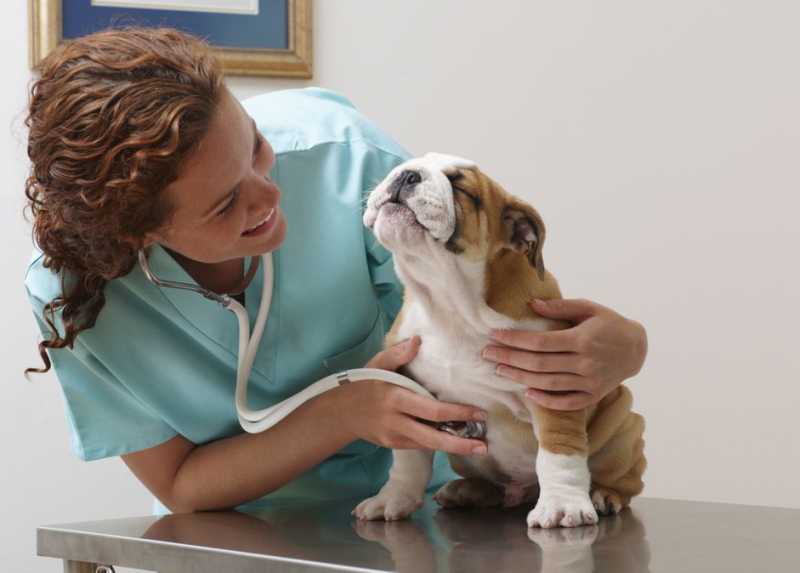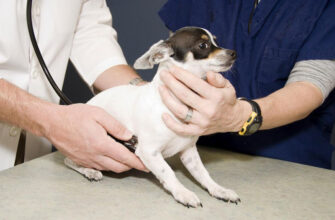Just like people, dogs have a normal range for body temperature, heart rate, and respiratory rate. These things help to regulate a dog’s bodily functions but can also change when there is a problem. Knowing what readings are normal for a dog and what it could mean if they aren’t is good for any dog owner to understand.
What Is a Body Temperature in a Dog?
A body temperature is how warm or cool a dog is. This is measured with a thermometer and a rectal temperature is the standard way to get an accurate temperature reading in a dog. It is recorded in degrees Fahrenheit or Celsius.
| Body Temperatures of a Dog | |
|---|---|
| Hypothermic/Low | Below 100 F |
| Normal | 100.5- 102.5 F |
| Hyperthermic/High/Fever | Over 103 F |
Rectal Temperature Range in a Dog in Degrees Fahrenheit
Problems With an Abnormal Body Temperature in a Dog
The body temperature is carefully regulated in a healthy dog.
If a dog’s temperature is too low, it could be the result of cold exposure, such as spending too much time outdoors on a very cold day. A low temperature is also seen with certain health conditions that cause poor circulation, such as heart disease, blood loss, or shock after an injury. A dog that has a low temperature will not receive adequate blood flow to all the parts of the body, and this can cause tissue damage as well as more severe effects including low heart rate, coma, or even death.
If a dog’s temperature is too high, it could be the result of heat exposure on a hot day, also known as heat stroke. In other cases, a high temperature may occur when a dog is fighting an infection and has a fever, after a seizure, or when a dog is very nervous. When the body is too warm (hyperthermic), it can cause damage to internal organs including the brain as well as causing blood clotting problems and leading to gastrointestinal bleeding, seizures, and death.
If a dog has an abnormal body temperature it may be lethargic and not very alert. If the temperature is too low, the dog may shiver but in many cases, this will not occur. You might be suspicious that your dog has a low temperature if its paws feel cold to the touch. If the temperature is too high the dog may pant but in many cases they might not. Either extreme is worrisome and your dog should be examined by a vet right away if you suspect any of these problems.
What is a Heart Rate in a Dog?
The heart rate of a dog may also referred to as the pulse when measured at a point on the body other than the heart. It quantifies how many times a dog’s heart beats in a minute and is recorded as Beats Per Minute or BPM. A dog’s heart pumps blood throughout the body and the heart rate can be felt by a dog owner by placing a hand over their dog’s heart.
The heart is located in the chest and the heartbeat is best detected just behind the left armpit along the wall of the chest. The beats can be easily felt in a lean dog. Each beat of the heart that is felt is counted within a 60 second time frame in order to obtain the heart rate. Sometimes beats are counted for 15 seconds and then that number is multiplied by four to obtain the same reading and to decrease the time it takes to obtain this information. A veterinarian or other veterinary professional may use a stethoscope to obtain this information or feel for a pulse in an artery in the leg of a dog as well.
| Heart Rates of a Dog | ||
|---|---|---|
| Large Breed | Small Breed | |
| Bradycardic/Low | Below 60 BPM | Below 80 BPM |
| Normal | 60-90 BPM | 90-120 BPM |
| Tachycardic/High | Over 100 BPM | Over 140 BPM |
Resting Heart Rate Ranges of a Dog in Beats Per Minute
Smaller dogs usually have faster heart rates than larger dogs. Dogs that are nervous may also have elevated heart rates temporarily.
Problems With an Abnormal Heart Rate in a Dog
If a dog’s heart is beating too slowly, enough blood isn’t being provided to the entire body. This can cause organ failure and ultimately death. There are many possible reasons for a low heart rate including a problem with the heart or blood pressure, extreme cold, hormone problems and/or drugs and toxins. If the heart is beating too quickly, this can also prevent enough blood from circulating as there is not enough time between heart contractions for the chambers to refill and pump the blood all the way through the vessels. An elevated heart rate can occur for many reasons including fear or excitement, pain, primary heart problems, blood loss, dehydration, hormone problems, high temperature, or drugs/toxins.
What is a Respiratory Rate in a Dog?
A respiratory rate is how many times a dog takes a breath in a minute and is recorded as Breaths Per Minute (BPM). An inhale and exhale together counts as one breath. This action is necessary to bring oxygen into the body and expel carbon dioxide, simply called breathing. This is usually done through a dog’s nose but can also occur through the mouth when they are panting. The most accurate way to measure a dog’s respiratory rate is when they are quietly resting or sleeping as this is uninterrupted by movement, episodes of panting, or other factors that may influence the rate.
| Respiratory Rates of a Dog | |
|---|---|
| Bradypneic/Low | Below 8 BPM |
| Normal | 10-30 BPM |
| Tachypneic/High | Above 30 BPM |
Sleeping Respiratory Rate (SRR) Ranges of a Dog in Breaths Per Minute
Dogs that are awake may not fall into this normal range as their breathing will change with exercise, excitement, as well as many other factors.
Problems With an Abnormal Respiratory Rate in a Dog
If a dog has a respiratory rate that is too slow or too fast, proper oxygenation of all the tissues in the body does not occur. This can cause permanent damage to the organs and tissues, make a dog weak, collapse, and even be fatal if enough oxygen is not circulated through the body. There are many possible causes for abnormal respiratory rates including fear, excitement, strenuous exercise, lung disease such as pneumonia, drugs/toxins, hormone abnormalities, blood loss, elevated temperature, low temperature, and many more. Panting is common in dogs and can occur with excitement, fear, high temperatures and exercise, but if it continues for an extended period of time or your dog seems distressed, it is important to have it seen by your vet.
If you suspect your pet is sick, call your vet immediately. For health-related questions, always consult your veterinarian, as they have examined your pet, know the pet’s health history, and can make the best recommendations for your pet. Article Sources The Spruce Pets uses only high-quality sources, including peer-reviewed studies, to support the facts within our articles. Read our editorial process to learn more about how we fact-check and keep our content accurate, reliable, and trustworthy.












